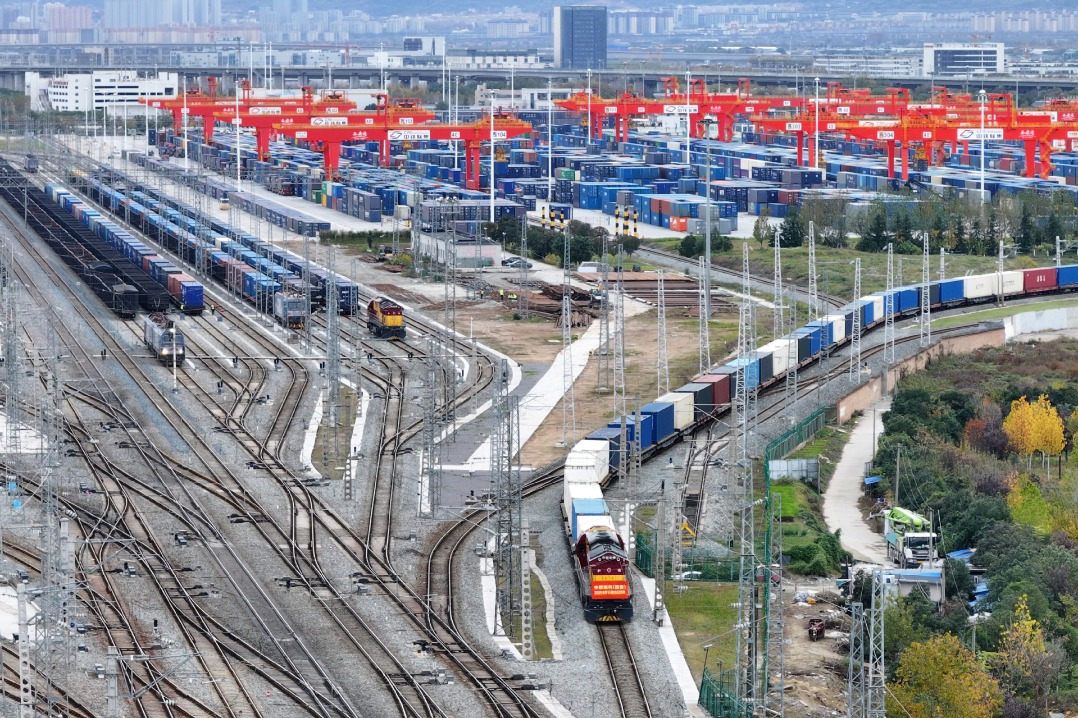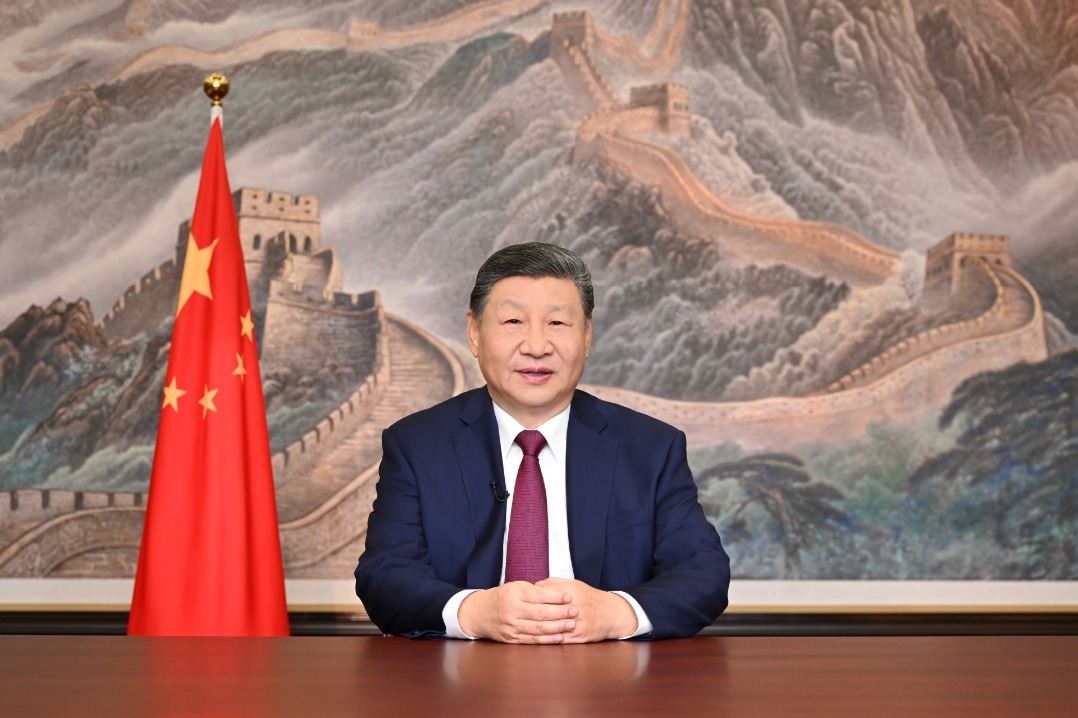CPEC a blessing for both Pakistan and China


The China-Pakistan Economic Corridor has emerged as a boon both for Pakistan and China. And not surprisingly, the peoples of the two countries have great expectations from the CPEC in terms of economic growth and regional development.
True, the provincial government of Balochistan in Pakistan has voiced concerns over the CPEC, saying its share of CPEC investment is very low. But the Pakistani planning, development and reform minister's recent allocation of $1 billion for social development in Balochistan has assuaged those concerns.
To further redress Balochistan's grievances, the Pakistani finance minister said industrialization would be expedited in Balochistan, in order to alleviate poverty and improve the living standards of the local people.
Gwadar can help boost Balochistan economy
Balochistan, which has a population of more than 12 million, is a crucial factor for the CPEC because the Gwadar port is situated there. The province covers 347,190 square kilometers, comprising about 44 percent of the total area of Pakistan. It may be a dry and arid region, but in terms of natural resources, it is Pakistan's richest province. Still, more than 53 percent of the people in Balochistan live below the poverty line, and the province has a poor literacy rate of about 29 percent, and an unemployment rate of almost 33 percent.
Despite being rich in natural resources, Balochistan lacks both skilled and unskilled workers, as well as the necessary capital to build an industrial base to achieve the much-wanted economic breakthrough to lift the poor out of poverty and improve their living standards.
So what measures should be taken to turn around the fortunes of Balochistan?
To begin with, the CPEC has the potential to change the situation thanks to the eagerness of the Chinese government and enterprises to invest in Balochistan, especially in Gwadar port, road connectivity projects and industrial zones. Within a few years, the CPEC's projects would facilitate massive economic activities, which would create jobs and help proliferate businesses that in turn would improve the living standards to the local people.
Gateway to Central Asia and the Persian Gulf
Gwadar is situated on an isthmus in the Arabian Sea on the southwestern coast of Pakistan. As such, it is a gateway to both the Persian Gulf and Central Asian countries, which would eventually connect 64 countries in Asia and Europe. No wonder it has been called the "standalone pillar" of the CPEC-and the China-proposed Belt and Road Initiative.
With its perfect geographical location, economic and geostrategic importance, Gwadar has all the features to transform into a regional hub of trade and transport, and an international seaport. The proposed planning and development term for Gwadar is from 2017 to 2050, with the short-term plan being between 2017 and 2025, the medium-term between 2026 and 2035, and the long-term between 2036 and 2050.
According to the Pakistani government's plans, Gwadar port will further flourish with the "blue economy" through committed spending of more than $824 million on 12 projects. And Saudi Arabia has promised to spend another $6-10 billion in the proposed Gwadar Oil City project and petrochemical chain to be developed under the CPEC.
As for road connectivity, some roads have already been built while others are in the pipeline. China has also vowed to build a 1,320-megawatt coal power plant in Gwadar by 2020 at a cost of $1.9 billion, and proposed to build a 300-megawatt coal-fired plant.
Potential of becoming a world tourist site
Balochistan has an unexplored seacoast with the potential of emerging as a global tourist attraction, which would attract bulk foreign direct investment. Balochistan's mineral resources are lying untapped for want of capital while some exposed mineral deposits are wasted because of "rat-hole" mining.
According to primary geological surveys, the region could have deposits of rare earth, precious and semi-precious metals, industrial minerals and a variety of stones including onyx, which can provide a huge base for setting up processing and manufacturing plants to produce export-quality value-added products.
Despite some grievances of the people of Balochistan, the construction of Gwadar port and infrastructure facilities such as road networks would boost the local economy and thus improve the living standards of the people not only in the province but also elsewhere in Pakistan. It is important here to emphasize that there is a consensus among all the stakeholders of the CPEC on the construction of the Gwadar port.
However, it is not unnatural that some people-either because of their naivety or due to their lack of understanding about the results-would raise questions on the need for a colossal economic project such as the CPEC.
CPEC and BRI face external opposition
The CPEC and the Belt and Road Initiative face opposition also because some external forces are misleading some people into believing the projects won't do them any good, because they don't want to see the Gwadar project completed. But the governments of Pakistan and China, media outlets, civil society, think tanks and academics have been quashing such misleading narratives.
The Pakistani government is also keen to provide a level playing field for the local business community by implementing necessary reforms in taxation to develop the region. Still, immediate interventions by the government would help a great deal to dispel the fears of local businesses. Also, timely reforms in different sectors coupled with the acceleration in CPEC projects would assuage the fears of local businesses and attract more international investment.
After the meeting of the 8th Joint Cooperation Committee of the CPEC in Beijing on Dec 20, when the Pakistani planning, development and reform minister announced the allocation of $1 billion development fund for Balochistan, the Chinese government said it was committed to expediting work on Gwadar international airport, and establishing vocational and technical training centers for the white-and blue-collar workers in the region.
At the training centers, the local workers can hone their respective skills, acquire management skills, learn to take capacity building measures, and explore agricultural and remedial measures to overcome the local challenges so as to ensure "all-inclusive" and "all-around" economic development.
Many countries eager to invest in Gwadar
Five years on the CPEC has given Pakistan so much leverage on the economic front that countries such as Saudi Arabia and the United Arab Emirates are eager to invest in Gwadar and elsewhere in Pakistan. And countries such as Malaysia, Turkey, Russia, and Central Asian and European states are looking forward to investing in the CPEC.
But people in Balochistan should realize that economic projects take time to bear fruits, so they must be patient and stay united. They should also know that the CPEC umbrella, which covers the Gwadar project, alone has the potential to turn Balochistan into an economic success story for Pakistan.
It is also important to emphasize that the malicious propaganda of some external forces that are using Balochistan's "depravity" to prompt some local people to question the CPEC's positive effects must be foiled both by the Pakistani and Chinese governments. The Pakistani government must also strategize a mass media campaign to educate the people by highlighting the eventual benefits of the CPEC and emphasizing the need for a peaceful and prosperous Balochistan without which the CPEC's "all-inclusive" slogan may lose its substance.
The author is working as a Deputy Director Media and Publications at CPEC-Centre of Excellence, Islamabad. He is also an Academician and a TV analyst of CPEC and International Relations.


































